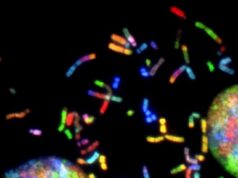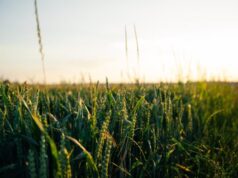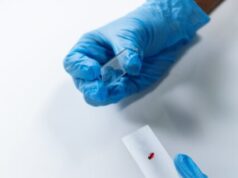Pilsner yeast, the well-known microorganism that brewers use every year to make hundreds of billions of liters of pilsner and other lagers, came into being 500 years ago through an accidental encounter between two species of yeast. The yeast strains now used to brew pilsner can all be traced back to that time. This is the conclusion reached by TU Delft researchers based on extensive DNA analysis.
Lager beer, also referred to as pilsner or pils, is the world’s most popular alcoholic drink. Every year, we drink around 200 billion liters of it. Pilsner is made by fermenting brewer’s wort with the yeast strain Saccharomyces pastorianus, sometimes called “pilsner yeast.” The micro-organism converts the wort sugars into ethanol, the best-known and most common type of alcohol, and a range of aromatic compounds that are essential to beer flavoring.
Spontaneous mating
Pilsner yeast is a hybrid species that arose about 500 years ago as a result of an accidental encounter between baker’s yeast (S. cerevisiae) and a wild yeast strain, today known as S. eubayanus. In those days, beer was made using baker’s yeast, at relatively high temperatures of between 15 and 25 degrees. The wild yeast strain probably accidentally ended up in an unsuspecting brewer’s brewing mix. A spontaneous mating between the two strains resulted in the hybrid pastorianus species, named after Louis Pasteur. “This yeast inherited an important characteristic from the wild strain: tolerance of low temperatures,” explains TU Delft researcher Arthur Gorter de Vries.
Fermentation at low temperature with the new hybrid species reduced the chance of bacterial contamination. The result was a beer with a predictable taste: lager beer, pilsner being the best-known variant. S. pastorianus strains used to produce pilsner are now divided into two groups: group I and group II. Although geneticists knew that these strains were the result of mating between baker’s yeast and the wild yeast strain, it was not possible to determine whether the groups originated from two accidental encounters between the two yeast species or from a single encounter.
Find your dream job in the space industry. Check our Space Job Board »
Shared ancestry
The TU Delft researchers have now shown that both groups originate from the same ancestors. After the accidental encounter between the baker’s yeast and the wild yeast, half a millennium ago, brewers began intensively using the hybrid species in various places in Europe and two groups ultimately came into being. Group I was definitely used by Carlsberg in Denmark, while group II became popular elsewhere in Europe, including at Heineken.
The fact that the two pilsner yeast groups have the same origin is not immediately obvious if you look at their DNA. The yeasts in both groups do have two copies of the wild eubayanus genome, probably responsible for their cold tolerance. But as far as the DNA of the baker’s yeast in this hybrid species is concerned, there are significant differences. “Group I has only one baker’s yeast genome, or even less than one, because certain chromosomes are missing some copies,” says Gorter de Vries. “Group II actually has two or more copies of most baker’s yeast chromosomes.” It would seem that this baker’s yeast DNA is important for brewing beer, because brewers now almost only use group II yeasts.
Smart algorithm
The TU Delft researchers discovered that the yeasts in the two different groups had the same ancestors by conducting extensive genetic research. “Normally, we compare genomes by using a technique known as a phylogenetic network,” says Thomas Abeel, who was also involved in the research. “The problem with this method is that the computing power you need to compare DNA sequences increases exponentially the more sequences you want to compare.”
For this analysis, large numbers of genomes from groups I and II had to be compared. A smart algorithm built by the Delft researchers made this possible. The algorithm was able to analyze the huge datasets of genetic material from a large group of yeasts collected by the researchers. “That enabled us to compile a kind of genetic map of pilsner yeast on which we were able to place the data from a large number of yeast strains from the different groups,” explains Abeel. The conclusion: One chance encounter between two types of yeast has led to all the pilsner yeasts we know today.
Big players
The major European brewers have been essential to the success of the hybrid. In the late 19th and early 20th century, a few breweries that had mastered yeast cultivation spread yeast across the whole of Europe. These breweries had specially controlled “starter cultures” that enabled them to consistently make beer with the same taste and of the same quality. Many breweries lacked this “advanced” technology and therefore bought yeast cultures from the innovative players.
These innovative brewers are famous names: “In 1883, Carlsberg’s Emil Christian Hansen was the first to isolate a group I yeast,” says Gorter de Vries. “A few years later, in 1886, Heineken’s Dr. Eduard Elion isolated several group II yeasts. After that, the two groups spread across the world.”
Provided by: Delft University of Technology
More information: Alex N. Salazar et al. Chromosome level assembly and comparative genome analysis confirm lager-brewing yeasts originated from a single hybridization. BMC Genomics (2019). DOI: 10.1186/s12864-019-6263-3
Image: Saccharomyces cerevisiae, SEM image.
Credit: Mogana Das Murtey and Patchamuthu Ramasamy/CC BY-SA 3.0











